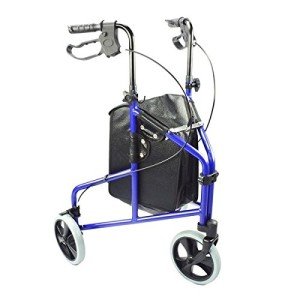In the pursuit of flexibility and ease, the modern walker has actually developed from a standard mobility aid into a sophisticated gadget developed to enhance the quality of life for individuals with minimal mobility. Whether due to age, injury, or disability, the requirement for efficient mobility solutions is universal. This article will look into the characteristics, benefits, developments, and factors to consider surrounding modern walkers, together with a regularly asked questions (FAQ) area to address common questions.

Traditional walkers, often built from aluminum or steel, generally feature a rectangular frame with four legs and no wheels. These basic models provide stability but can be cumbersome, requiring users to raise the device instead of press it. As a result, their use typically positions unnecessary strain on the upper body and reduces mobility efficacy.
In the past couple of years, the design and functionality of walkers have actually transformed considerably. Modern walkers typically include functions such as:
This evolutionary shift not just supports much better mobility however also increases self-confidence, self-reliance, and safety for users.
Modern walkers come with a variety of advantages for people looking for help in mobility. These benefits go beyond simple physical support, contributing favorably to psychological and emotional health too.
Modern walkers empower users to navigate their environment more freely. Features such as wheels and lightweight 3-wheel rollator with brakes - nrs designs assist in ease of movement, allowing users to preserve autonomy in day-to-day activities.
The incorporation of safety features in modern walkers plays a vital function in preventing falls and injuries. Anti-slip grips and larger bases of assistance add to stability, therefore assuring users about their safety while walking.
Numerous modern walkers offer multifunctional designs, working as both a mobility aid and a storage option. With functions like built-in bags and trays, users can bring essentials and individual products, making trips with these walkers more convenient.
Improved mobility can significantly impact a person's mental health. Less reliance on caretakers and the capability to participate in social interactions can promote a sense of belonging and improved spirits.
When picking a modern walker, numerous features ought to be taken into account to guarantee it satisfies the user's requirements optimally. Here, we offer a list of key factors to consider:
The market today offers a range of walker types customized to various requirements. Below are some typical options:
| Walker Type | Secret Features | Best For |
|---|---|---|
| Requirement Walker | Lightweight, no wheels | Maximum stability |
| Rolling Walker | Four wheels, typically a seat | Increased mobility |
| Upright Walker | Promotes upright posture | Pain in the back alleviation |
| Transport Walker | Compact and lightweight | Caregivers and brief ranges |
The very best walker for seniors mostly depends on their physical condition and mobility levels. Many choose rolling walkers due to their ease of use, while those with higher stability requirements might gain from basic walkers.
To make sure an appropriate fit, stand inside the walker with your arms hanging conveniently at your sides. Your elbows should be slightly bent when holding the walker deals with. Change the height up until it lines up perfectly.
Yes, many modern walkers are developed to fold for simple transportation. Designs such as transportation walkers are particularly lightweight and compact, making them appropriate for travel.
Lots of insurance plans, including Medicare and Medicaid, may cover the cost of walkers when recommended by a doctor. It is advised to verify protection details with your insurance coverage company.
Routine checks must be carried out for any loose screws, frame stability, and wheel performance. Tidy the Durable Walker regularly to keep hygiene and curb wear.
The modern walker represents a significant development in mobility aids, enhancing the independence and self-confidence of users. With different types, functions, and considerations offered, choosing the best walker can significantly enhance mobility and overall lifestyle. Comprehending these tools empowers users, Senior walker caretakers, and healthcare professionals alike to promote a supportive, active neighborhood for those requiring help in mobility. The modern walker is not just a device; it is a bridge to freedom and independence.
No Data Found!

